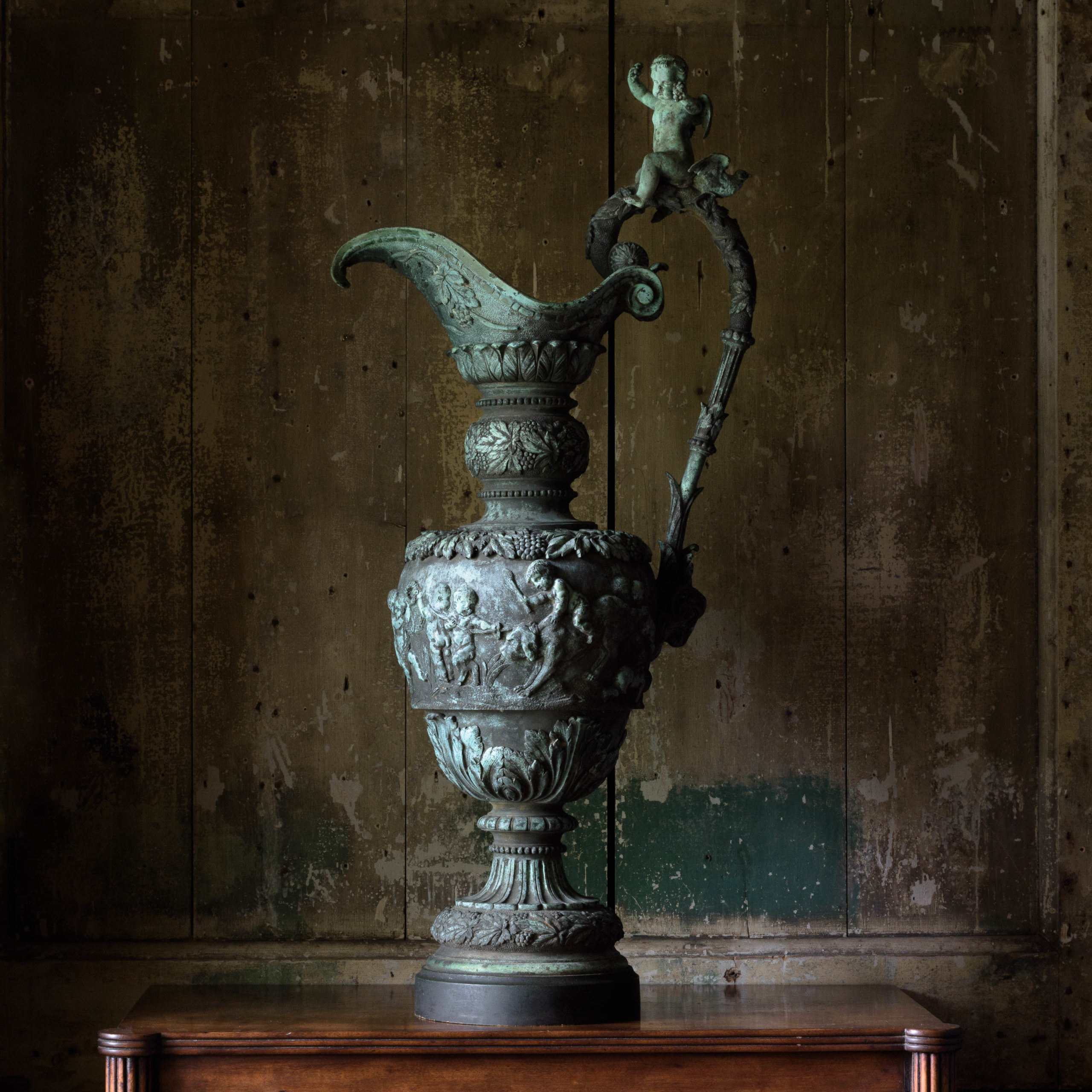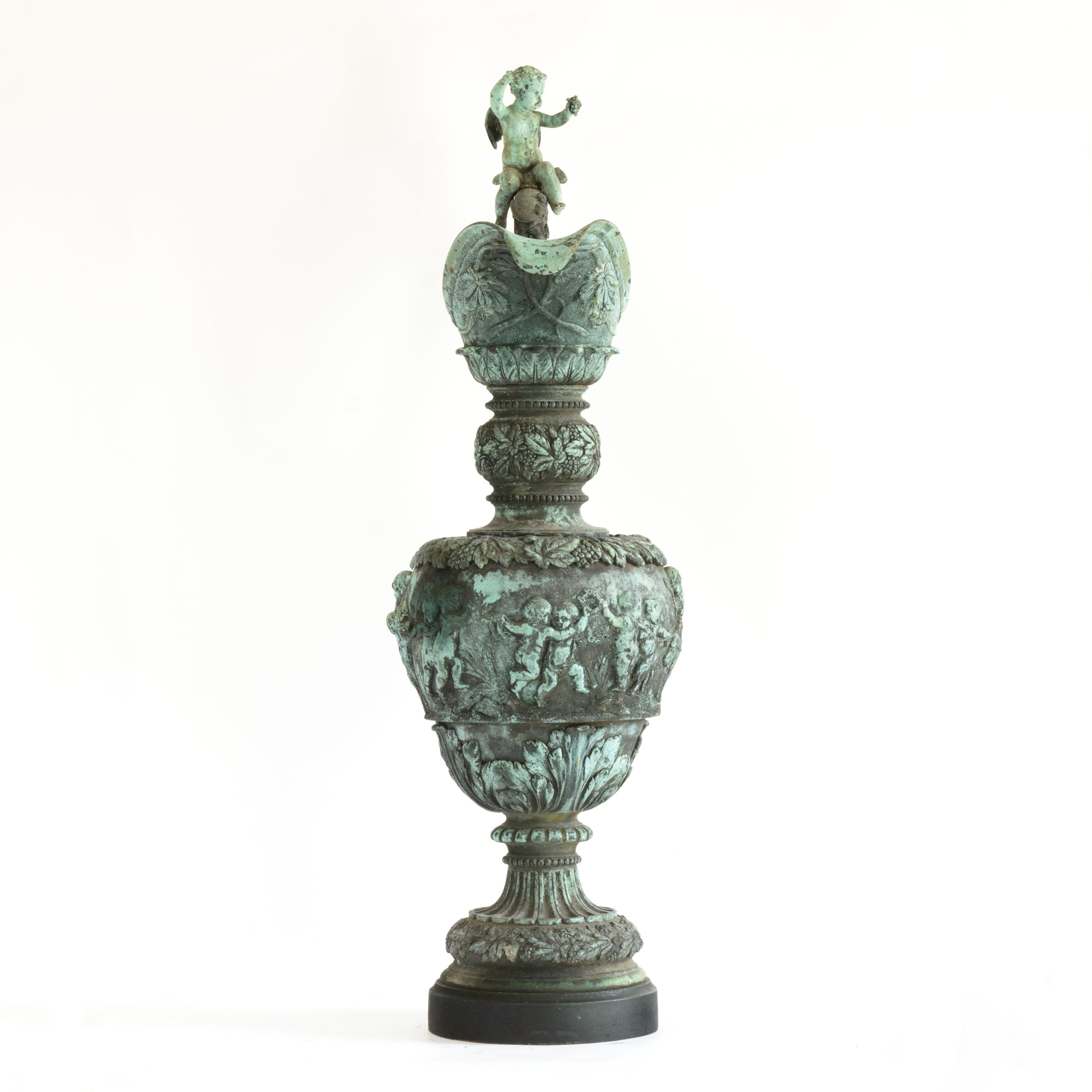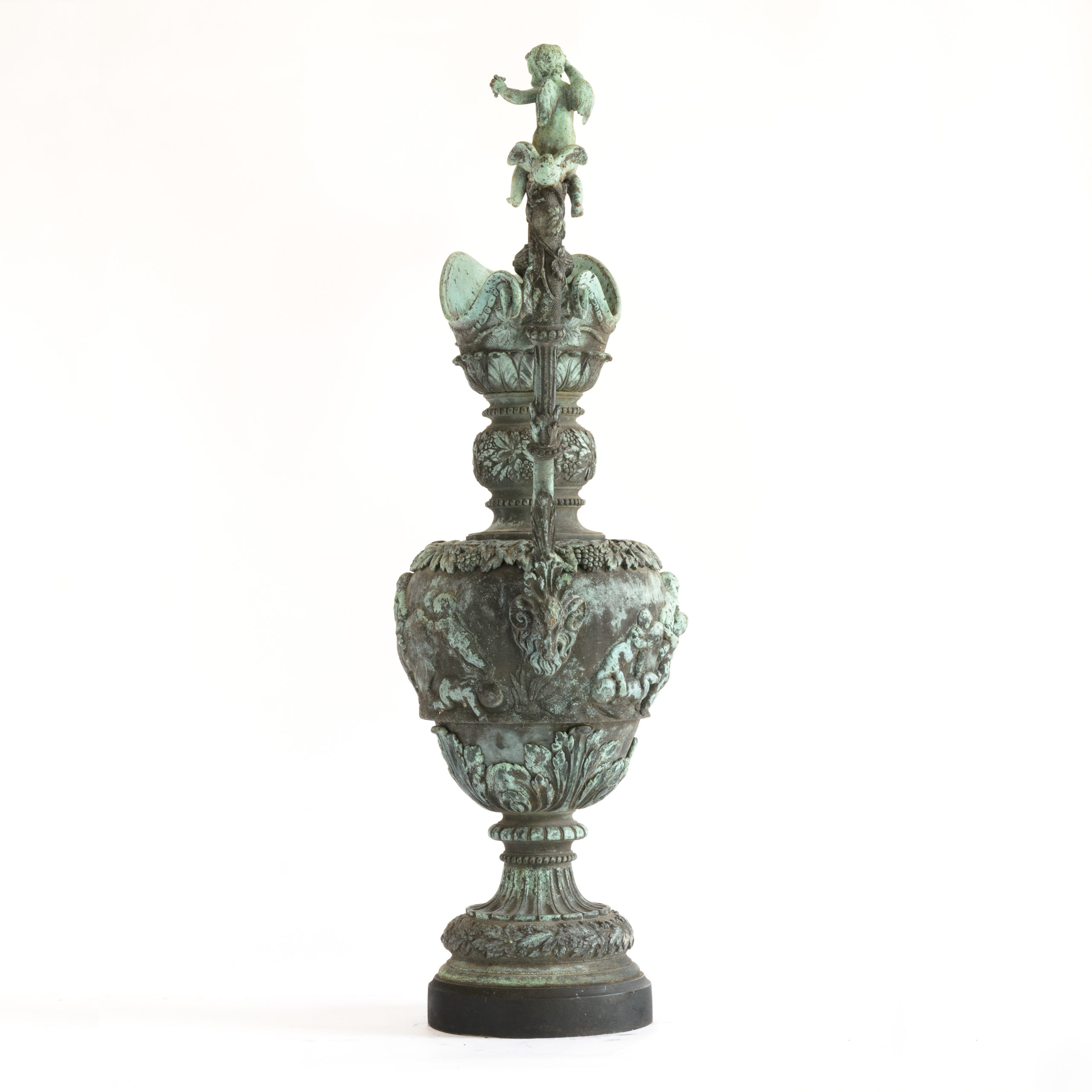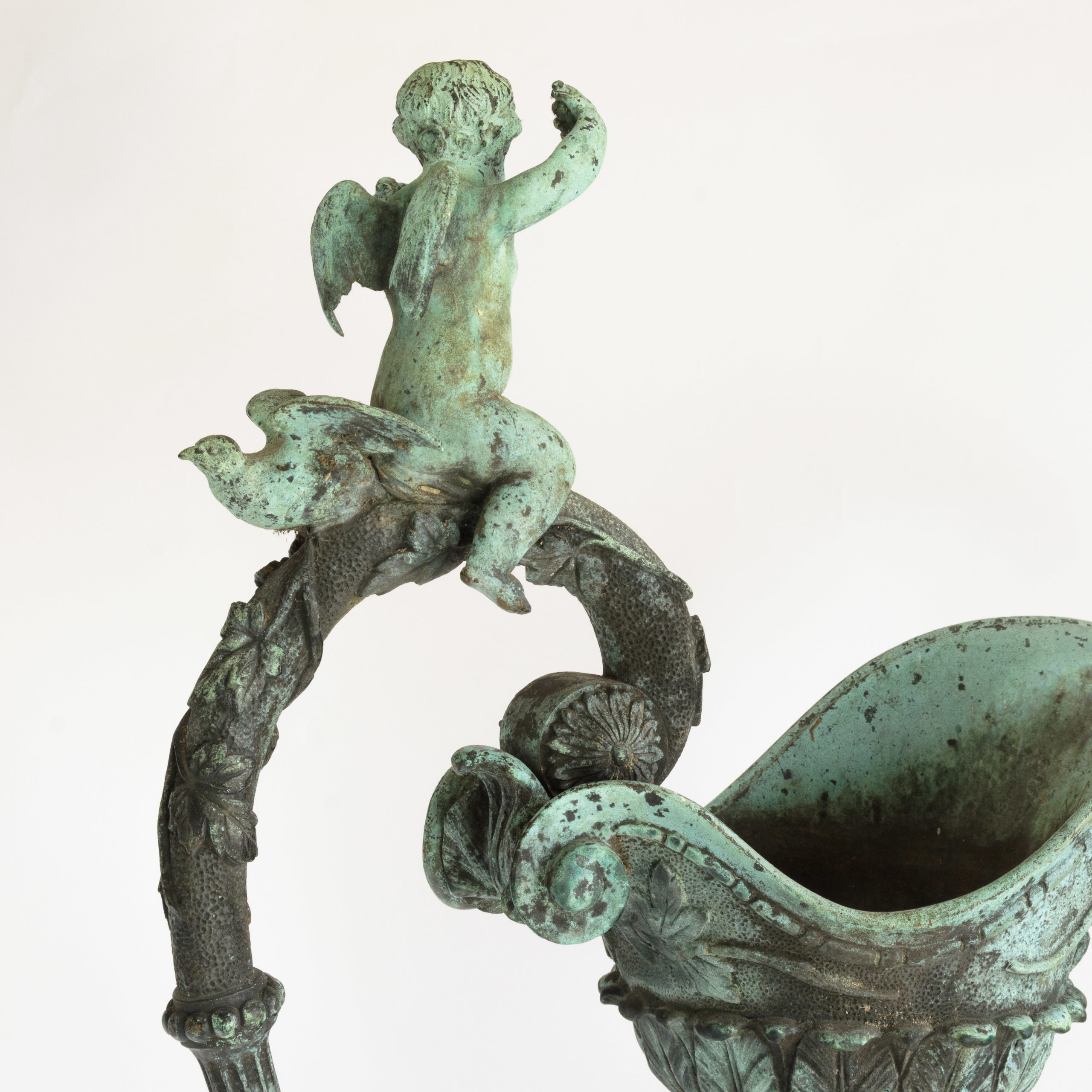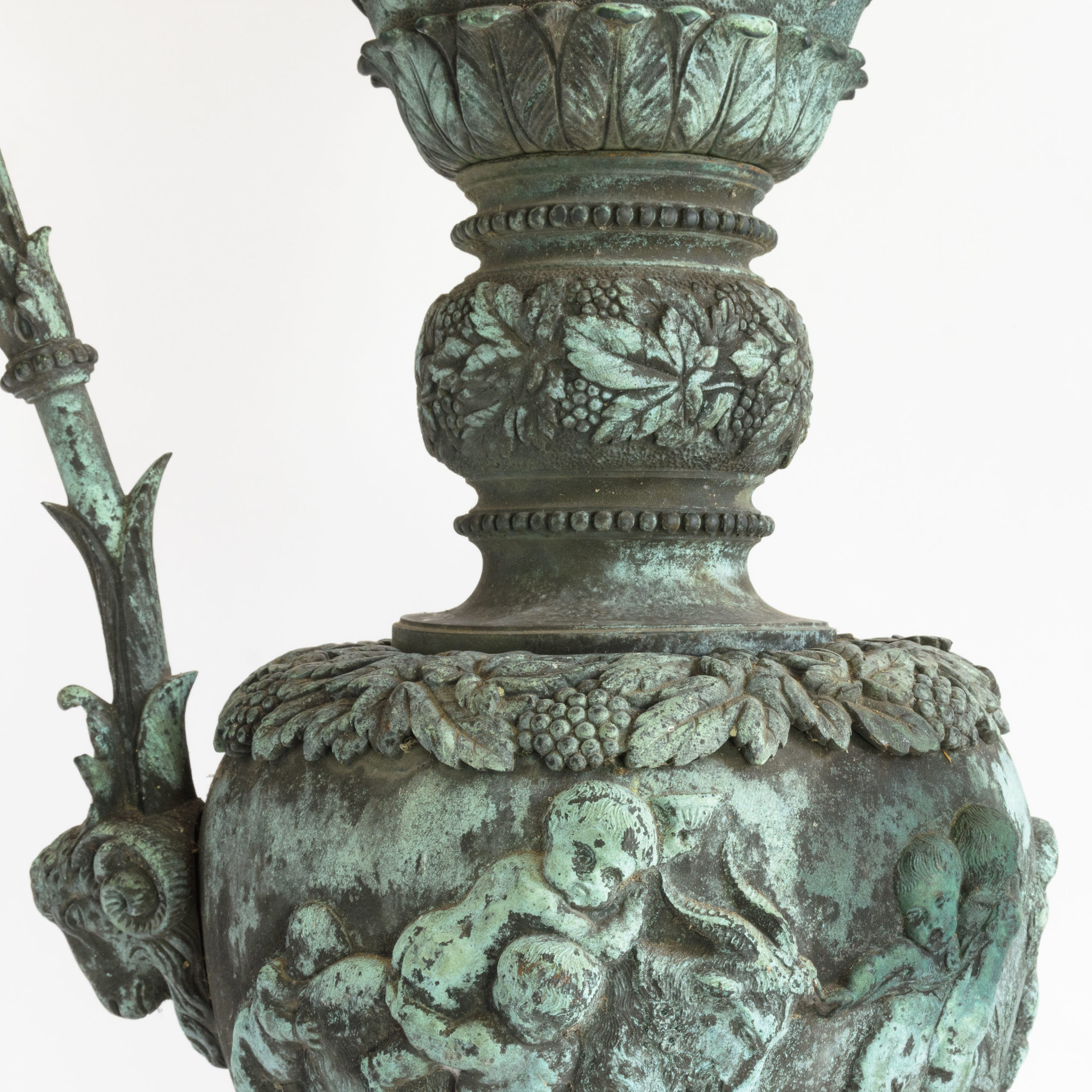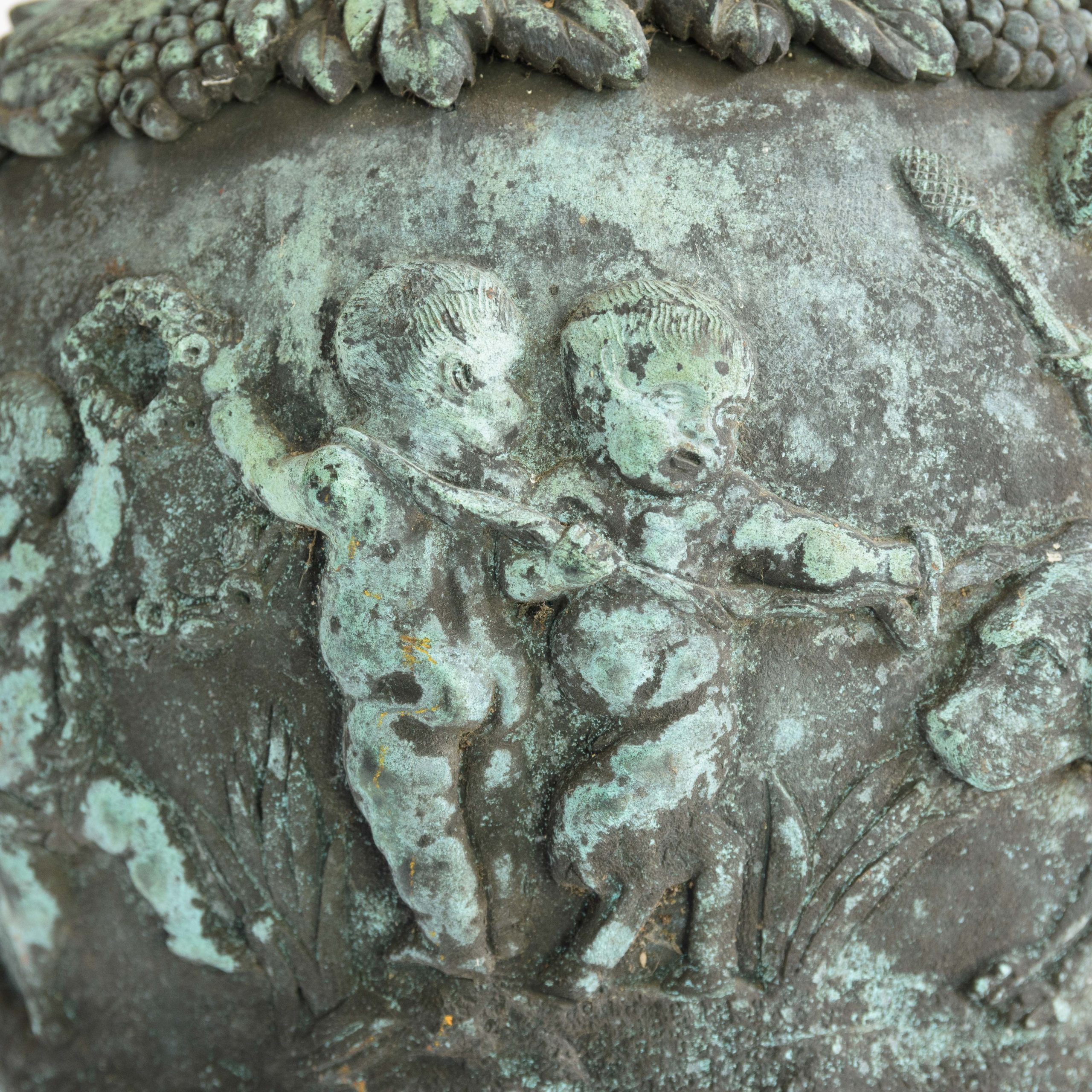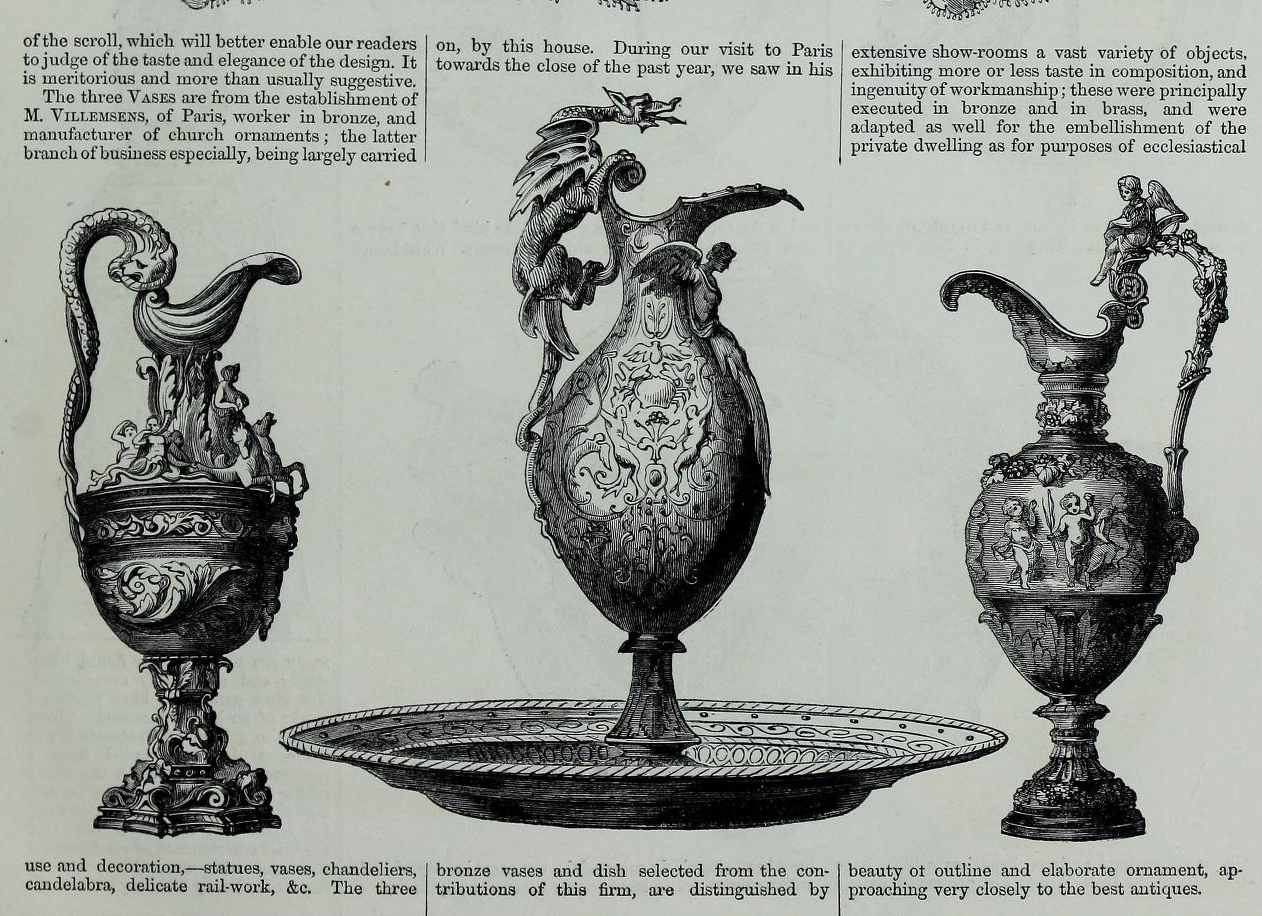Archived Stock - This item is no longer available
French mid-nineteenth century bronze ewer,
in the Renaissance style, the bulbous body cast with bacchanalian scenes of frolicking putti, the elaborate handle surmounted by a putto and terminating in ram’s mask, on spreading foot base cast with vines, with all over verdigris surface.
SOLD OUT
In stock
The inclusion of this piece in ‘The Illustrated Exhibitor 1851’ shows that a ewer of this design was shown at The Great Exhibition of 1851 by Villemsens of Paris.
The title of the piece, discussing the vase, ‘French Contributions reviewed by a Frenchman’, may betray the reason for such high praise. It states ‘at first sight a certain general average quality seems to exist between the plastic productions of Bavaria Prussia, Belgium, Saxony, and Paris. A closer examination reveals a vast disparity. Paris appears to be supreme in taste.’
There is further discussion of the three pieces shown by Villemsens in ‘The Art Illustrated Catalogue of The Industry of All Nations, 1851’ – ‘The three vases are from the establishment of M. Villemsens of Paris, worker in bronze, and manufacturer of church ornaments; the latter branch of business especially, being largely carried on by this house. During our visit to Paris towards the close of the past year, we saw in his extensive show-rooms a vast variety of objects, exhibiting more or less taste in composition, and ingenuity of workmanship; these were principally executed in bronze and in brass, and were adapted as well for the embellishment of the private dwelling as for purposes of ecclesiastical use and decoration - statues, vases, chandeliers, candelabra, delicate rail-work, etc. The three bronze vases and dish selected from the contributions of this firm are distinguished by beauty of outline and elaborate ornament, approaching very closely to the best antiques".
Villemsens won a new medal at the 1851 exhibition for the vases shown of which this is one, and had preceded this with a silver medal at the last Exhibition of French Industry Products in 1849. He subsequently exhibited in New York in 1853 and won another prize at the Paris exhibition of 1855.

